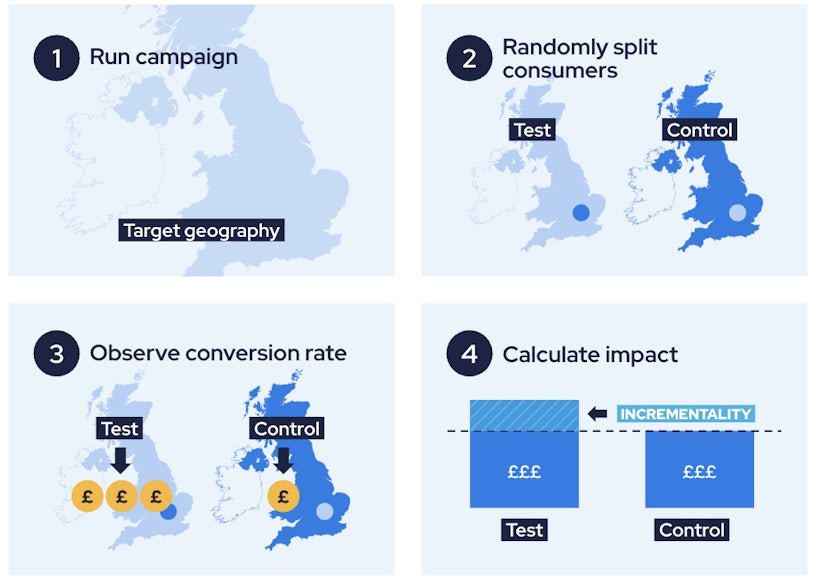Video advertising is a cornerstone of paid media. It enables powerful storytelling across social media and streaming services, while offering analytics capabilities and extensive audience targeting. Consumption habits are shifting rapidly, so it is vital to understand when and where you should be reaching your audience with video.
Audiences that you can reach at different moments
Video advertising isn’t one size fits all. Each format offers unique advantages when it comes to reaching specific audiences based on where, how, and when they consume content. As online video continues to grow, it’s more important than ever for advertisers to match the right video environment with the right audience.
Connected TV (CTV): Premium storytelling in the living room
Connected TV is any television that connects to the internet to stream content, either through built-in smart features or external devices like Roku, Apple TV, or Amazon Fire TV Stick. CTV advertising includes video ads served within streaming platforms like Netflix (with ads), Disney+, ITVX, and others.
CTVs are now almost in every home, and smart TVs can access streaming services like Netflix, Disney+, and Prime Video. In its full-screen environment, ads demand attention similarly to traditional broadcast ads. Audiences tend to be made up of millennials, Gen X, and households with families. The strength of CTV lies in data-driven targeting. Through programmatic buying, an automated system to buy and sell advertising inventory, you can target viewers by demographics, interests, and behaviours.
YouTube: Diverse formats for intent-driven audiences
47% of all global internet users access YouTube monthly. That’s a lot of potential reach. YouTube offers a range of ad formats such as skippable, non-skippable, bumper and Shorts. The platform typically has an audience of early Gen Z and mid to late millennials, with intent-based ads in both long-form and short-form content environments.
The flexibility of ad formats on offer is a big benefit. Whether you’re using skippable in-stream ads to tell a longer brand story, non-skippable formats for guaranteed attention, or bumper ads for short, memorable messages, YouTube’s versatility caters to different moments in your audience’s journey.
Shorts is becoming a go-to platform for reaching younger audiences who favour bite-sized content. Users of YouTube Shorts tend to be mobile-first, often scrolling during commutes, breaks, or downtime. This makes it an excellent space for high-frequency, visually compelling creative that drives brand recognition or quick calls to action.
Online video across the web: Broad reach with targeted precision
This refers to video ads served across websites, apps, and digital environments outside of social platforms and streaming TV. These videos typically appear before (pre-roll), during (mid-roll), or after (post-roll) content on publisher sites. Online video is often bought programmatically and reaches broad audiences with targeted messaging while they browse content across the web.
Online video is ideal for upper-funnel goals like awareness and engagement, allowing you to connect with audiences as they browse news, entertainment, or lifestyle content. Viewers here span a wide range of age groups and demographics.
Strategic integration: Matching format to viewer behaviour
Aligning formats with viewing habits is the key to success here:
- Use CTV to build an emotional connection in high-attention environments.
- YouTube to drive performance and relevance.
- Online video to capture attention across the wider web.
By tailoring your approach to how and where people consume video, you can have a well-rounded strategy that delivers your message to the right audiences, in the right places.
Measuring success
To effectively manage Online Video, CTV (Connected TV), and YouTube within a multi-channel campaign, it’s essential to understand not just how each performs in isolation but how they work together to drive performance against wider business objectives. A good first step in doing this is incrementality testing.
Incrementality testing helps you determine the true impact of each channel by answering a simple but important question: Would this conversion have happened without exposure to this ad or channel?
For example, incrementality testing can reveal whether YouTube ads are actually driving new interest or just reaching users who would have converted anyway. This form of testing is often more immediately actionable and accessible to most advertisers, making it a practical entry point for data-driven optimisation.

As your strategy matures and your investment in multi-channel video grows, Media Mix Modelling (MMM) becomes a powerful, longer-term solution. MMM takes a broader view, analysing historical data across all media channels to uncover how each one contributes to overall performance over time.
By starting with incrementality testing and scaling up to MMM, you can build a measurement framework that grows with your campaigns. This unified, insight-driven approach empowers you to continuously refine your video strategy.
Each channel offers unique strengths: the broad reach of online video, CTV’s premium storytelling and YouTube’s intent-driven targeting. To maximise effectiveness, you must align the right video format with your audience and understand how these platforms work together. Incrementality testing allows you to measure true impact and optimise in real-time, while Media Mix Modelling (MMM) provides a broader, long-term view of cross-channel performance. Together, these tools offer a scalable framework for building smarter, more effective video strategies. Talk to a member of our team to learn more about MMM & incrementality testing.






